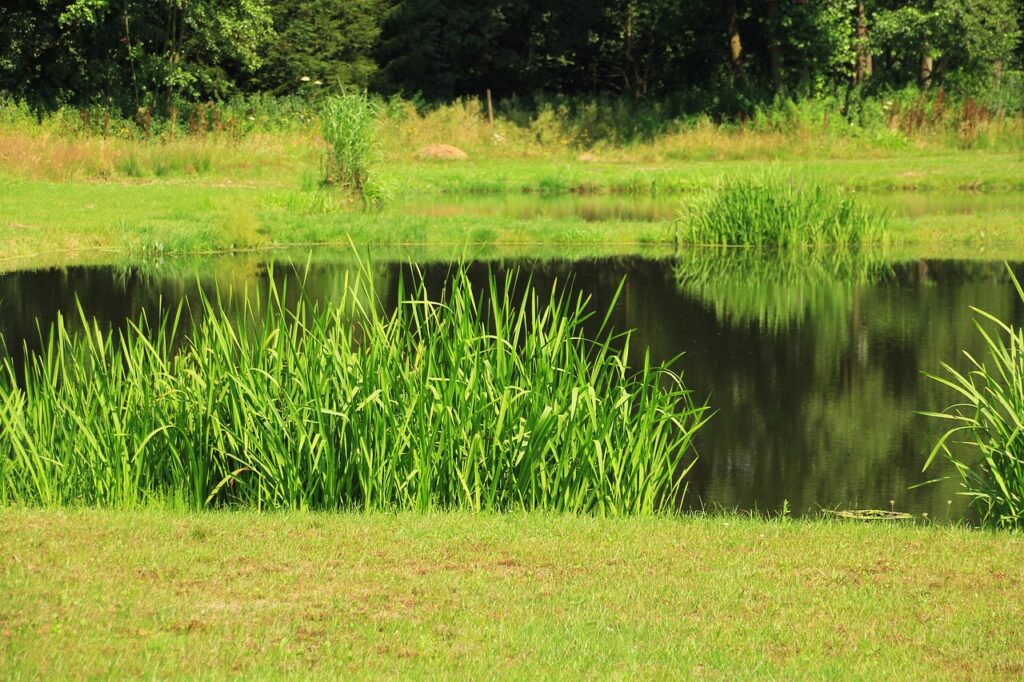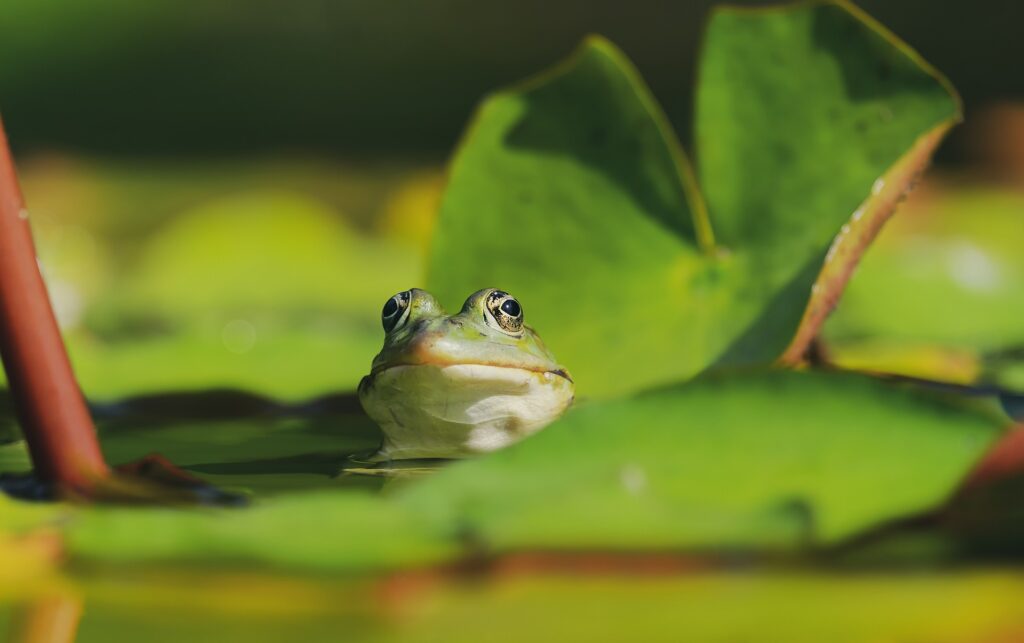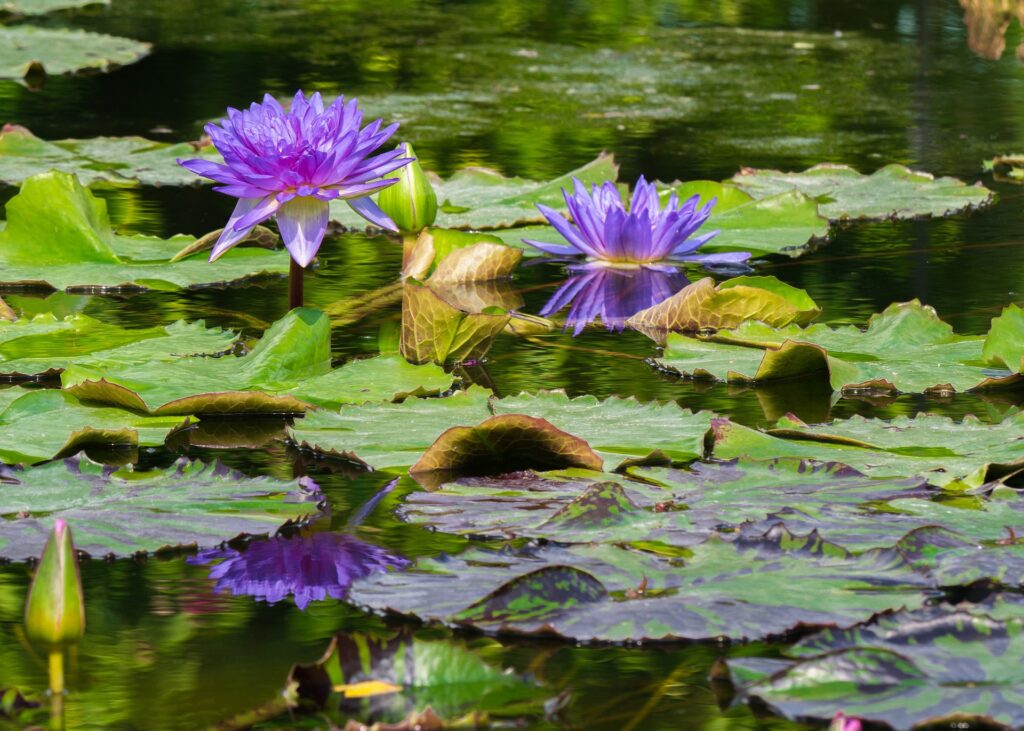Imagine a tranquil oasis in your backyard: a beautiful pond filled with vibrant fish gracefully swimming beneath the glistening surface. However, before you embark on this aquatic endeavor, it’s crucial to consider the vital question: how big must a pond be for fish?
The size of a pond plays a pivotal role in the well-being and survival of the aquatic inhabitants. In this article, we will explore the factors influencing the required pond size for optimal fish growth and happiness, enlightening you on everything you need to know to create an idyllic aquatic home for your beloved finned companions.

Types of Fish
Coldwater fish
Coldwater fish are a popular choice for pond enthusiasts due to their hardiness and adaptability to cooler temperatures. Common coldwater fish species include goldfish and koi. These fish can withstand colder water temperatures and do not require a heated pond environment. They come in a variety of sizes, colors, and patterns, adding beauty and charm to any pond.
Tropical fish
Tropical fish, on the other hand, thrive in warmer water temperatures and are known for their vibrant colors and unique patterns. Species such as guppies, mollies, and swordtails are commonly kept in tropical fish ponds. These fish require a heated pond or a warm climate to ensure their health and vitality. Tropical fish add a tropical paradise-like ambiance to any outdoor space.
Factors to Consider
Fish species and sizes
The types of fish you plan to keep in your pond are a crucial consideration when determining the size requirements. Different fish species have specific space needs, both horizontally and vertically. Larger fish like koi require more room to swim and grow compared to smaller fish like goldfish. Research the mature size of the species you intend to keep so that you can plan the appropriate pond size accordingly.
Water quality requirements
Different fish species have varying water quality requirements to thrive. Factors such as pH levels, temperature ranges, and oxygen levels need to be considered when planning your pond size. Some fish species may produce more waste, making it necessary to provide a larger volume of water to maintain optimal water quality. Understanding the specific needs of your desired fish species will help you determine the pond size necessary to support their well-being.
Desired fish population
Consider the number of fish you want to keep in your pond. Overcrowding can lead to poor water quality and stress for the fish. Each fish requires a certain amount of space to swim and establish territories. By determining the desired fish population, you can calculate the appropriate pond size to provide enough space for each fish to thrive.
Natural elements and surroundings
Take into consideration the natural elements and surroundings of your pond area. Factors such as sunlight exposure, nearby trees or plants, and the overall landscape should be considered when determining the appropriate pond size. These elements can impact water temperature, oxygen levels, and maintenance requirements. Observing and understanding these factors will help create an optimal environment for your fish.
Minimum Space Requirements
General guidelines for pond size
As a general guideline, the minimum pond size for fish is often recommended to be at least 50 gallons per fish. However, this guideline varies depending on the species and their mature size. It is always better to provide more space than the minimum requirement to ensure the well-being of the fish. Larger ponds also provide more stability in terms of water quality and temperature fluctuations.
Determining space based on fish size
Fish size plays a significant role in determining the appropriate pond size. To calculate the space needed for a fish, measure the fish’s length, width, and height when fully stretched out. Multiply the length by width by height to get the cubic inches. Convert cubic inches to gallons by dividing the cubic inches by 231.
Consideration for fish growth
It is essential to consider the potential growth of your fish when calculating the pond size. Fish can grow significantly over time, and providing enough space from the start allows them to thrive and prevents overcrowding issues in the future. Research the expected growth rate of your chosen fish species and plan your pond size accordingly.
Best Practices
Monitoring water parameters
Regular monitoring of water parameters is crucial for maintaining a healthy pond environment for your fish. Test the water regularly for pH, ammonia, nitrate, and nitrite levels. Keeping these parameters within the appropriate range will prevent stress-related illnesses and ensure the well-being of your fish.
Providing proper aeration and filtration
Aeration and filtration are essential for maintaining water quality in your pond. Proper aeration ensures oxygen levels are sufficient for the fish, while filtration helps remove waste and debris. Invest in a suitable filtration system and consider adding aerators or water pumps to keep the water well-oxygenated. This will help create a healthy and thriving environment for your fish.
Offering adequate hiding spots
Fish need adequate hiding spots to feel secure and reduce stress. Incorporate rocks, caves, or plants into your pond design to provide suitable hiding spots for your fish. These hiding spots also serve as breeding areas and can add visual interest to your pond. Creating a diverse and stimulating environment for your fish will contribute to their overall well-being.

Adding plants for oxygen supply
Aquatic plants not only add beauty and aesthetic appeal to your pond but also play a vital role in maintaining proper oxygen levels. Plants help oxygenate the water through photosynthesis, providing a natural oxygen supply for your fish. Consider adding a variety of submerged, floating, and marginal plants to your pond to support the ecosystem and enhance the health of your fish.
Calculating Pond Volume
Surface area and depth
When calculating pond volume, you need to consider both the surface area and depth of the pond. A larger surface area allows for better oxygen exchange with the atmosphere, while depth impacts temperature stability and provides more swimming space for your fish. Aim for a reasonable balance between surface area and depth depending on your specific fish species and environmental conditions.
Determining gallon capacity
To determine the gallon capacity of your pond, multiply the surface area by the average depth. Convert the measurements to the same units (e.g., feet or meters) before calculating. If you have irregularly shaped ponds, divide the pond into sections and calculate each section’s volume individually. Sum up the volumes of each section to get the total gallon capacity of your pond.
Coldwater Fish Pond Sizes
Recommended minimum sizes for goldfish ponds
Goldfish are popular coldwater fish that require ample space to thrive. To provide a comfortable environment for goldfish, the minimum pond size recommended is 20 gallons per fish. If you plan to keep multiple goldfish, increase the pond size accordingly. Larger goldfish varieties, such as the common goldfish or koi, may require even larger pond sizes due to their substantial size and growth potential.
Sizing guidelines for koi ponds
Koi, known for their striking colors and graceful swimming, require more significant pond sizes compared to goldfish. For small to medium-sized koi, a pond size of at least 1000 gallons is recommended. Larger koi or those with significant growth potential may require ponds ranging from 2000 to 5000 gallons or more. Additionally, it is crucial to provide suitable filtration systems and aeration to support the higher waste production of koi.

Tropical Fish Pond Sizes
Minimum pond sizes for tropical fish
Tropical fish, with their vibrant colors and unique patterns, can bring a touch of the tropics to your backyard. The minimum pond size for tropical fish varies depending on the species. Small-bodied tropical fish, such as guppies or tetras, can thrive in ponds as small as 20 gallons, while larger species like angelfish or mollies may require larger pond sizes of 50 gallons or more. Research the specific needs of your chosen tropical fish species to determine the appropriate pond size.
Sizing considerations for specific tropical species
Certain tropical fish species have unique requirements that should be considered when sizing your pond. Some species, like Oscar fish or discus fish, can grow quite large and require ample swimming space. Others, like labyrinth fish (bettas and gouramis), may prefer shallow ponds with appropriate plants and hiding spots. Take into account these specific requirements to ensure your tropical fish can flourish in their environment.
Consideration for Fish Growth
Allowing room for fish growth
Fish are not static creatures; they grow and develop over time. When planning your pond size, consider the potential growth of your fish. Providing enough space from the beginning allows your fish to grow without feeling cramped, promoting healthy development and reducing stress-related issues. Plan for the adult size of your fish species and consider their growth rate when determining the appropriate pond size.
Planning for potential fish breeding
If you plan to breed your fish, it is essential to account for their reproductive behavior when determining the pond size. Breeding fish require additional space for courtship rituals, spawning, and fry rearing. Research the breeding habits and space requirements of your desired fish species and allot adequate space within your pond design to support successful breeding endeavors.
Avoiding overcrowding
Overcrowding is a common issue in fish ponds and can lead to stress-related illnesses, reduced water quality, and ultimately, a decline in the health of the fish. Avoiding overcrowding is vital for maintaining a harmonious and balanced pond ecosystem. Consider the space requirements of your fish species, their social behavior, and filtration capacity when determining the appropriate fish population for your pond.

Customizing Pond Design
Pond shape and layout
When designing your pond, consider the shape and layout that will best suit your preferences and the natural surroundings. Rectangular or oval-shaped ponds often provide more swimming space for fish, while kidney-shaped or irregularly shaped ponds can add visual interest to your landscape. Take into account the available space and the desired aesthetic appeal when choosing the shape and layout of your pond.
Integration of waterfall or stream
Adding a waterfall or stream to your pond not only enhances the visual appeal but also helps improve water circulation and oxygenation. The sound of running water adds a soothing ambiance to the surroundings. Consider incorporating a waterfall or stream into your pond design, taking into account the available space and the specific needs of your fish species.
Additional features like fish caves or platforms
To create a more diverse and stimulating environment for your fish, consider adding additional features like fish caves or platforms. Caves provide hiding spots and breeding areas, while platforms can provide elevated spaces for fish to rest or bask under sunlight. These additional features add visual interest and contribute to the overall health and well-being of your fish.
Maintaining the Pond
Regular water testing and treatment
To ensure the long-term health of your fish, regular water testing and treatment are essential. Monitor water parameters such as pH, ammonia, nitrate, and nitrite levels regularly and take appropriate action if any parameters are out of the optimal range. Treatments such as water conditioners and algae control may be necessary from time to time. Regular maintenance and water testing will help prevent potential issues and maintain a stable and healthy pond environment.
Routine cleaning and debris removal
Regular cleaning and debris removal are necessary to maintain water clarity and prevent the buildup of harmful substances. Clear excess debris like fallen leaves or uneaten fish food to prevent water pollution. Regularly clean or replace the pond filter and remove any algae buildup to maintain optimal filtration and water quality. Routine cleaning ensures a clean and healthy environment for your fish.
Seasonal pond care tips
Different seasons may require specific care and maintenance for your pond. In colder regions, winterizing the pond is crucial to protect your fish during freezing temperatures. This may involve installing a pond heater or transferring the fish to an indoor tank until spring. In warmer seasons, regular monitoring of water parameters and increased algae control may be necessary. Adapt your pond care routine to the changing seasons to provide the best care for your fish throughout the year.
How Big Must A Pond Be For Fish
In conclusion, determining the appropriate pond size for fish is crucial for their health and well-being. Consider factors such as fish species and sizes, water quality requirements, desired fish population, and natural elements when planning your pond. Providing adequate space, proper aeration, suitable hiding spots, and considering fish growth will contribute to a thriving pond environment.
Customize your pond design to suit your preferences and add features that benefit your fish. Regular maintenance and cleaning, along with seasonal care tips, will ensure the long-term health and enjoyment of your fish pond. By following these guidelines and considering the specific needs of your fish, you can create a beautiful and harmonious aquatic habitat for your fish to thrive in.
That covers our information about the size of a fish pond and what you should also consider when building one. If you want more information about fish ponds, check this out ‘What Is The Ideal Pond Ecosystem‘.
